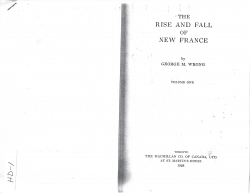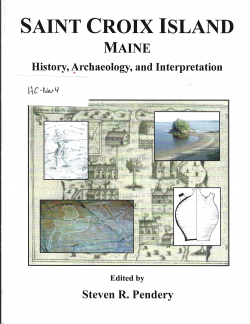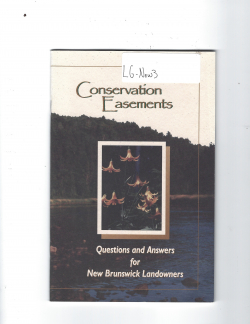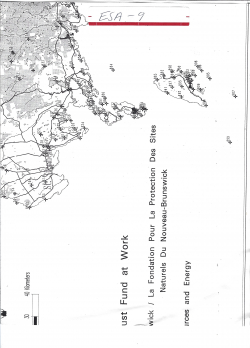Samuel de Champlain: Father of New France

Book Stores
Type
Book
Authors
SEMorrison ( Samuel Elliot Morrision )
Category
SCIWC Library
[ Browse Items ]
Publication Year
1972
Publisher
Little, Brown and Company, United States
Pages
299
Subject
St. Croix River History
Abstract
“Preface
Samuel de Champlain was the most versatile of colonial founders in North America; at once sailor and soldier, writer an man of action, artist and explorer, ruler and administrator. Sailors admire him, not only for exploring the rugged coast of New England without serious mishap, but for his Treaties on Seamanship, in which his description love “The Good Captain” well applies to himself: “An upright, God fearing man, not dainty about food or drink, robust and alert, with good sea legs.” Canoeists admire him for his explorations up rugged Canadian rivers, and his uncomplaining acceptance of hardship and danger in the long, long carries and the sault. historians admire him for his detailed records of voyages and events in Canada, the best source we have for the first third of the seventeenth century.
Champlain's accounts of his coastal cruises and explorations of the interior were embellished with drawings of flora, fauna, and fights with the natives, which, though not of great artistic merit, are marvelously informing; and they are accompanied by maps which for fifty years were not surpassed in accuracy. Loyal to his King, his church and his wife, he endeavored with success to lead the New Testament life in an age of loose morals. The life of this great man encompassed those efforts which led to the Founding of New France.
My interest in Champlain goes back to boyhood, when in 1904 I saw the tear Centennial monument to him erected on Mount Desert island -- at the wrong place. His Voyages, in the Slafter translation, were my companions in sundry cruises along the coasts of New England and L’ Acadie – Nova Scotia and New Brunswick. Later I became the proud possessor of the Champlain society edition of his Works, and as early as 1950 , when my wife and I resumed cruising along The Maine coast, I planned to write a new biography of my hero. Other and more pressing matters interrupted the work; But here in it is brought to fruition.
Strange how someone’s offhand remark sticks. More than 40 years ago I conducted a seminar at Harvard on early American history, and one of my Canadian students was Arthur R. M. Lower, who has since become a distinguished professor of history at Queens University, Kingston. When I opened up the Harvard copy of Champlain 1612 map, have Lower pointed out the surprising accuracy of its delineation of the Ottawa River Valley. Then in there I determine someday to explore this region, by air if not by canoe; and finally the chance came this very year. My friend James F. Nields, with Robert D. Huntington Jr. As copilot, flew me up the Ottawa and Mattawa River valleys to Lake Nipissing, then over the 30,000 islands of Georgian Bay, and then across Old Huronia to Lake Simcoe. We next followed Champlain’s route, surprisingly close to the Trent Canal System, to Lakes Ontario and Oneida, where we checked the little pond where Champlain met his first defeat. Thence we crossed the Adirondacks to Schroon Lake, New York,a nd spent a night pleasantly and profitably at hospitable Ticonderoga as guests of John Pell and Colonel Edward P. Hamilton. Before returning to my Boston base, we paid a visit to Plymouth and Cape Cod – Champlain’s Port Saint-Louis, Mallebarre, and Port Fortune. But I hope that Canadian sportsmen will follow Champlain’s entire inland course by canoe, and give us a photographic report of it.
Now for a few practical matters.
The spelling of French personal names at this period is a problem. Champlain's name seldom varies; but Pont-Grave, for instance, is given five or six different names in the sources. I have therefore followed the usage of Marcel Trudel, the eminent Canadian Historian.
The Scales on Champlain’s harbor charts are in toises, each of which was equivalent to 1.96 meters or 6.4 feet, a little more than a fathom, which the French generally called brasse. The soundings are in brasses. On the big maps the scale is in lieues, leagues. W. F. Ganong, who studied this subject very thoroughly, states in the Champlain Society edition of the Works I 200 that Champlain’s league represents “about two and a half of our geographical (i.e., nautical) miles.” It is evident that Champlain used la petite lieue marine, which various plottings on charts indicate to be somewhere between 2.2 and 2.7 nautical miles long. For discussion, see my European Discovery of America: Northern Voyages A.D. 500-1600 (1971), pp. 288, 382, 387. In my opinion, 2.5 nautical miles, or 4633 meters, is a fair average for Champlain’s league.
To conclude, here is my best effort to honor one of the greatest pioneers, explorers and colonists of all time.
S. E. Morrison
“Good Hope”, Northeast Harbor, Maine, 1 August 1971”
Samuel de Champlain was the most versatile of colonial founders in North America; at once sailor and soldier, writer an man of action, artist and explorer, ruler and administrator. Sailors admire him, not only for exploring the rugged coast of New England without serious mishap, but for his Treaties on Seamanship, in which his description love “The Good Captain” well applies to himself: “An upright, God fearing man, not dainty about food or drink, robust and alert, with good sea legs.” Canoeists admire him for his explorations up rugged Canadian rivers, and his uncomplaining acceptance of hardship and danger in the long, long carries and the sault. historians admire him for his detailed records of voyages and events in Canada, the best source we have for the first third of the seventeenth century.
Champlain's accounts of his coastal cruises and explorations of the interior were embellished with drawings of flora, fauna, and fights with the natives, which, though not of great artistic merit, are marvelously informing; and they are accompanied by maps which for fifty years were not surpassed in accuracy. Loyal to his King, his church and his wife, he endeavored with success to lead the New Testament life in an age of loose morals. The life of this great man encompassed those efforts which led to the Founding of New France.
My interest in Champlain goes back to boyhood, when in 1904 I saw the tear Centennial monument to him erected on Mount Desert island -- at the wrong place. His Voyages, in the Slafter translation, were my companions in sundry cruises along the coasts of New England and L’ Acadie – Nova Scotia and New Brunswick. Later I became the proud possessor of the Champlain society edition of his Works, and as early as 1950 , when my wife and I resumed cruising along The Maine coast, I planned to write a new biography of my hero. Other and more pressing matters interrupted the work; But here in it is brought to fruition.
Strange how someone’s offhand remark sticks. More than 40 years ago I conducted a seminar at Harvard on early American history, and one of my Canadian students was Arthur R. M. Lower, who has since become a distinguished professor of history at Queens University, Kingston. When I opened up the Harvard copy of Champlain 1612 map, have Lower pointed out the surprising accuracy of its delineation of the Ottawa River Valley. Then in there I determine someday to explore this region, by air if not by canoe; and finally the chance came this very year. My friend James F. Nields, with Robert D. Huntington Jr. As copilot, flew me up the Ottawa and Mattawa River valleys to Lake Nipissing, then over the 30,000 islands of Georgian Bay, and then across Old Huronia to Lake Simcoe. We next followed Champlain’s route, surprisingly close to the Trent Canal System, to Lakes Ontario and Oneida, where we checked the little pond where Champlain met his first defeat. Thence we crossed the Adirondacks to Schroon Lake, New York,a nd spent a night pleasantly and profitably at hospitable Ticonderoga as guests of John Pell and Colonel Edward P. Hamilton. Before returning to my Boston base, we paid a visit to Plymouth and Cape Cod – Champlain’s Port Saint-Louis, Mallebarre, and Port Fortune. But I hope that Canadian sportsmen will follow Champlain’s entire inland course by canoe, and give us a photographic report of it.
Now for a few practical matters.
The spelling of French personal names at this period is a problem. Champlain's name seldom varies; but Pont-Grave, for instance, is given five or six different names in the sources. I have therefore followed the usage of Marcel Trudel, the eminent Canadian Historian.
The Scales on Champlain’s harbor charts are in toises, each of which was equivalent to 1.96 meters or 6.4 feet, a little more than a fathom, which the French generally called brasse. The soundings are in brasses. On the big maps the scale is in lieues, leagues. W. F. Ganong, who studied this subject very thoroughly, states in the Champlain Society edition of the Works I 200 that Champlain’s league represents “about two and a half of our geographical (i.e., nautical) miles.” It is evident that Champlain used la petite lieue marine, which various plottings on charts indicate to be somewhere between 2.2 and 2.7 nautical miles long. For discussion, see my European Discovery of America: Northern Voyages A.D. 500-1600 (1971), pp. 288, 382, 387. In my opinion, 2.5 nautical miles, or 4633 meters, is a fair average for Champlain’s league.
To conclude, here is my best effort to honor one of the greatest pioneers, explorers and colonists of all time.
S. E. Morrison
“Good Hope”, Northeast Harbor, Maine, 1 August 1971”
Description
This document is a bound copy of a book entitled: Samuel de Champlain: Father of New France
The document follows the the career of Samuel de Champlain's voyages, explorations, and colonizing acts as they unfolded upon the 'yet to be' Canadian landscape.
The document follows the the career of Samuel de Champlain's voyages, explorations, and colonizing acts as they unfolded upon the 'yet to be' Canadian landscape.
Number of Copies
1
| Library | Accession No | Call No | Copy No | Edition | Location | Availability |
|---|---|---|---|---|---|---|
| SCIWC Administration | 12901 | HD-2 | 1 | Yes |




